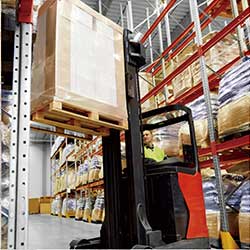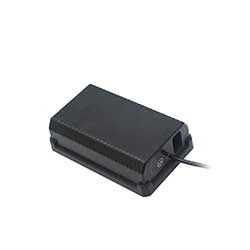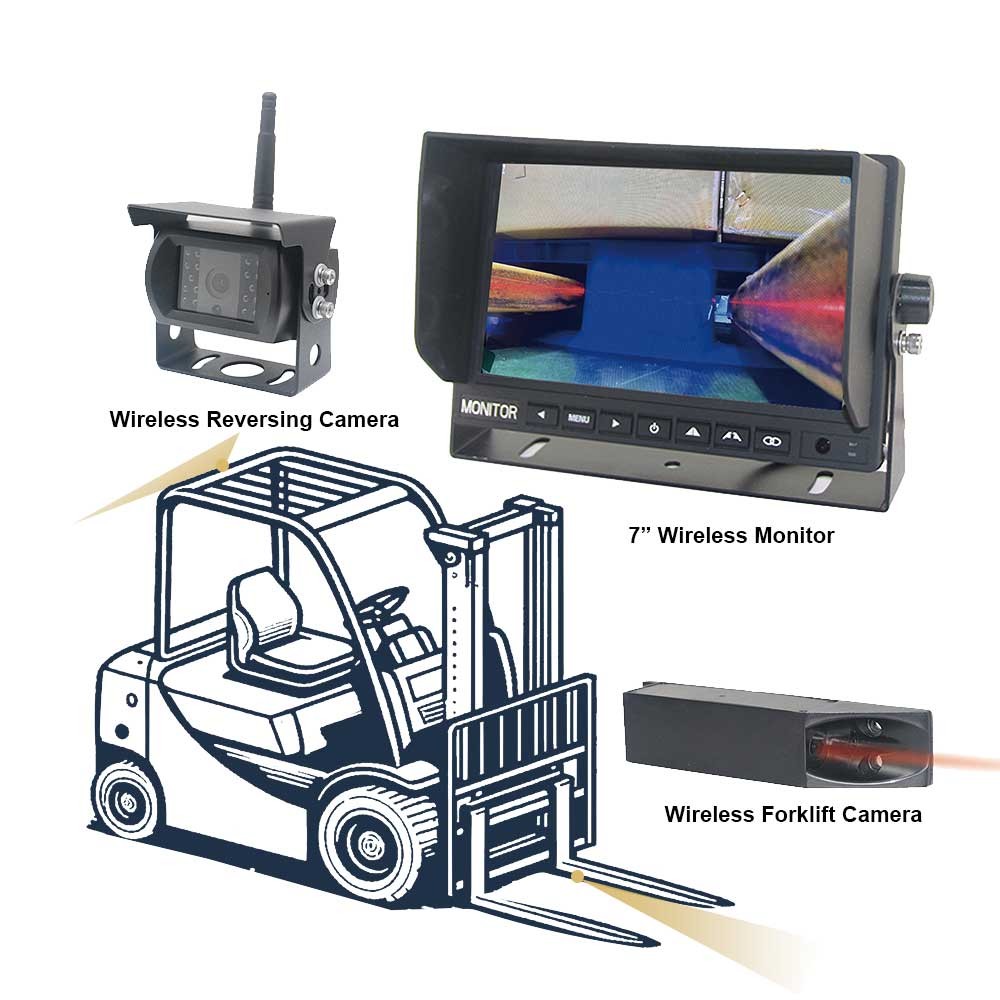Rechargeable Wireless Forklift Camera System
>laser positioning help to operate the fork accurately
>magnetic basement to save time on wiring
>rechargeable and easy power supply with external battery
Why choose Rechargeable Wireless Forklift Camera System ?
If you own a forklift, you may be wondering why you need to install a camera system. In fact, a forklift camera is an important safety measure that prevents operators from hitting pedestrians or other cargo due to blind spots, eliminating potential hazards.
 |  |  |
| Blind spot vision | Distence measurement | Reverse collision |
Solution Combination:
 |
|
|
1080P 7" wireless monitor -CM-709MDW-HD | Rechargeable forklift camera -AC-978MDW-HD | Wireless reversing camera -AC-301MDW-HD(optional) |
 |  |  |
IP68 waterproof wireless monitor -CM-708MDW-HD(optional) | battery box (optional) | 48V DC converter (optional) |
What is the Rechargeable Wireless Forklift Camera System?
A set of forklift related wireless monitoring equipment. Includes Wireless Reversing Camera, 7” Wireless Monitor and Wireless Forklift Camera. These devices may be used to improve the safety and visibility of forklift operations, helping operators to better see around the forklift and into the forks.

The working principle of wireless forklift camera is as follows:
I. Image Acquisition
Wireless Forklift Camera (WFC) is usually mounted at a critical part of the forklift, such as near or behind the forks. Inside the camera there is an image sensor (e.g. CCD or CMOS sensor), which is able to convert light into electrical signals.
When light enters the camera lens, the lens focuses the light onto the image sensor. Each pixel point of the image sensor generates a corresponding charge depending on the intensity of the light, and these charges are converted into digital image signals after analog-to-digital conversion.
II. Wireless Transmission
Coding and Modulation
The digital image signals captured by the camera need to be encoded and modulated for wireless transmission. The encoding process compresses the image data to reduce the amount of data and improve transmission efficiency. Common encoding formats include H.264, H.265, and so on.
The modulation process, on the other hand, converts the encoded digital signal into an RF signal suitable for wireless transmission. This usually involves adjusting the frequency and amplitude of the digital signal so that it can propagate over the wireless frequency band.
Wireless Transmission and Reception
The modulated RF signal is transmitted from the camera end via an antenna. Wireless forklift cameras usually transmit in specific wireless frequency bands, such as 2.4GHz or 5.8GHz, which have better transmission characteristics and immunity to interference.
At the receiving end, which is the wireless monitor (e.g. 7” Wireless Monitor) mounted in the forklift cab, an antenna is used to receive the RF signals transmitted by the camera. The receiving antenna transmits the received RF signal to the receiver, which then demodulates and decodes the signal.
Image Display
Monitor Side
The receiver transmits the demodulated and decoded digital image signal to the monitor. Monitor internal display controller, it will be converted to digital image signal can be displayed on the screen image.
The monitor's screen (e.g., a 7-inch screen) will display the image captured by the camera according to the received image signal, so that the forklift operator can clearly see the situation around the forks or behind the forklift, thus improving the safety and accuracy of the operation.
IV. Power Supply
Power supply system
Wireless forklift cameras usually require a stable power supply. This can be provided by the forklift truck's own power system, for example through a battery connected to the forklift truck to obtain power.
Some cameras may also be equipped with a battery or power management system to ensure that normal operation can be maintained for a certain period of time in the event of unstable power supply to the forklift truck or temporary power failure.
By working on the above principles, wireless forklift cameras can provide real-time visual assistance to forklift operators, helping them to operate their forklifts more safely and efficiently.
Contact:Mr.Tom
Phone:13924650100
E-mail:aotop@263.net
Add:FL8,4 Bldg,Honghui Industrial Park,Liuxian 3 Rd,68 Zone,Bao'an,Shenzhen, China